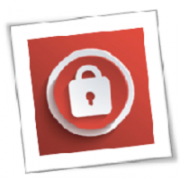Cybercriminals are always looking for new ways to steal data and make a buck at the expense of someone they’ve never met. They don’t care if they ruin someone’s life or destroy a business in the process. This is why it’s so important to stay up-to-date with the latest technology.
Cyber security threats are constantly evolving. If you let your software or hardware – or both – fall behind the times, then you put your business at serious risk. Five years ago, your malware protection might have been the best on the market. If you haven’t updated since then, you need to change that. Here’s what you can do right now to protect everything you’ve worked so hard to achieve.
Stay updated. After a while, developers and manufacturers stop supporting their old hardware and software. Many of them simply don’t have the resources to keep updating older products. They need to make sure their current products are supported and secure. After five years, they may stop sending out security patches for their software. Or they might not offer help-desk support for a seven-year-old router.
If you run into this situation, you may need to invest in new equipment or software. It can be a tough pill to swallow, but it doesn’t compare to the cost of dealing with a hack or data loss. Data loss can be devastating for a business. Some never recover and have to close their doors because the cost is so high – and customers don’t want to give their money to a business that isn’t going to keep their data secure.
At the same time, you need to update your existing equipment and software. Make sure everything has the latest security patches. Most hardware and software come with an option for automatic updates. If you’re concerned that you’ll miss an update, then keep this option on. It is a good idea, however, to check everything periodically to make sure the updates are being applied, just in case.
Say yes to proactive monitoring. Proactive network monitoring can be your best friend in the fight against cyber-attacks. Many IT security firms now offer proactive services. Basically, they watch your network 24/7. If a threat is found, they can stop it before it does any damage. They act immediately to stop those threats.
You can sign up for real-time reports or just get updates once a week to stay informed so you know what’s going on with your network. Proactive monitoring can also make sure your systems are up-to-date (coming back to our first point). If they detect a vulnerability, then they can work to patch it. This means you have so much less to worry about so you can focus on what really matters: growing your business and taking care of customers!
Back up everything. If you don’t have data backups for your business, it’s time to change that. Setting up a data backup system – whether it’s local or cloud-based – can sound like a lot of work. You might have a ton of data, especially if you’ve been in operation for long. But not having a backup system can tear your business apart.
If a piece of hardware fails or a hacker gets into your data, you may have to dig deep into your pocket to recover it or you may just lose it all. There are a lot of scenarios where data can be lost.
Investing in a backup system, like a secure cloud backup, solves this. You can set up a secure system that backs up data daily (or nightly), weekly or whenever you need it. It’s good to keep backups off-site just in case anything happens on-site (electrical surges, flood, fire, theft, etc.). If data is lost or your network falls victim to ransomware, then you can restore your data and continue operations!
These tips can seem like a lot, but when you partner with a dedicated IT services company, you can overcome a lot of hurdles. Working with IT specialists is how to keep your business safe in a world where cybercriminals are actively trying to break in. You want someone with the expertise to secure your network watching over your shoulders.
To learn more about how to safeguard your business, or if you are looking for an expert to help you find the best solutions for your business talk to GCInfotech about a free technology assessment.
Published with consideration from TechAdvisory.org SOURCE



